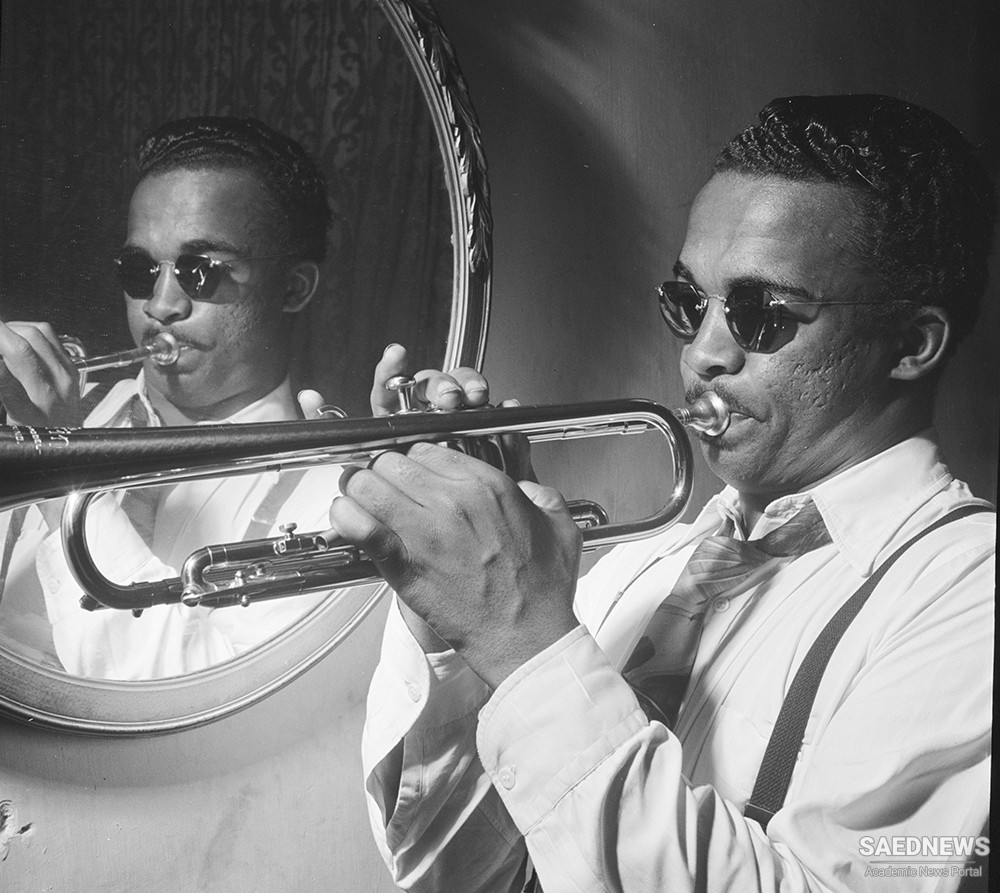Once more he did not strive for a musical sound; on the contrary, he wanted to distort his natural voice and to produce a harsh sound in order to frighten evil spirits. The evolution from a simple megaphone to an actual trumpet was slow, and it is not easy to say when the first real trumpets originated. Even these first trumpets blared only one or two notes.
The terrifying sound of the early trumpets is associated with many magic rites. It is used at circumcisions, at funerals and at sunset rites, when the reappearance of the life-giving star is imperiled; and the Babwende of the Belgian Congo carve their funeral trumpets in the magic shape of a phallos. Even in Europe today trumpets are connected with the same rites. Long wooden trumpets are blown at Rumanian funerals. In some Catholic cantons of Switzerland the kindred alphorn sounds at sunset at the same time that the evening prayer is sung into a megaphone: the early trumpet used as a megaphone, and the later form of a real trumpet, are preserved in the same rite.
The trumpet is exclusively played by men. Among certain tribes of the Amazon a woman who has seen a trumpet is killed. Other Indians destroy it after use and hide the mouth part in a brook. This same custom is preserved in the south of Holland; wooden trumpets, related to the alphorn, are blown at Advent and hidden in a well until the following year. The magic power of the trumpet has often been augmented by the red color of its painting or drapery; even in European armies of the present time, trumpets and bugles are wrapped in red woollen material, and red remains the distinctive color of many military bands, an astonishing example of the tenacity of early traditions.
A later, though still primitive, offshoot of the trumpet is the side-blown or transverse trumpet with a mouth-hole on the side. Transverse trumpets are common among the South American Indians (fig. 24) and the African Negroes, who make them either of antelope horn or the tusk of an elephant. They also existed far away in Ireland during the bronze age and, as we know of prehistoric relations between northeastern Africa and Ireland, this otherwise incomprehensible fact is not miraculous.
Primitive men use large conch shells as well as their rough tubular trumpets. The spiral replaces the tube, and the natural opening the bell. An earlier type of shell trumpet is end-blown, the mouth-hole being cut in the center of the round end, or apex; in a later type, which dates from the end of pre-Christian times, the hole is cut in the side, thus creating a side-blown or transverse shell trumpet. In some countries, ancient Peru for instance, shell trumpets were replaced by clay trumpets in shell form.
The oldest conch shells were not real trumpets any more than the earliest wooden or cane trumpets. Gunnar Landtman relates that in one of the most primitive tribes of New Guinea the king or chieftain always held “a trumpet shell before his mouth when speaking to his people, so his voice had a very hollow sound.” Once more a musical instrument was first used for the purpose of masking the voice.


 Flute Magic: Resurrection and Rebirth
Flute Magic: Resurrection and Rebirth














































